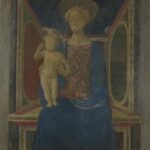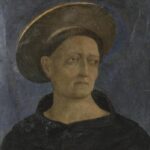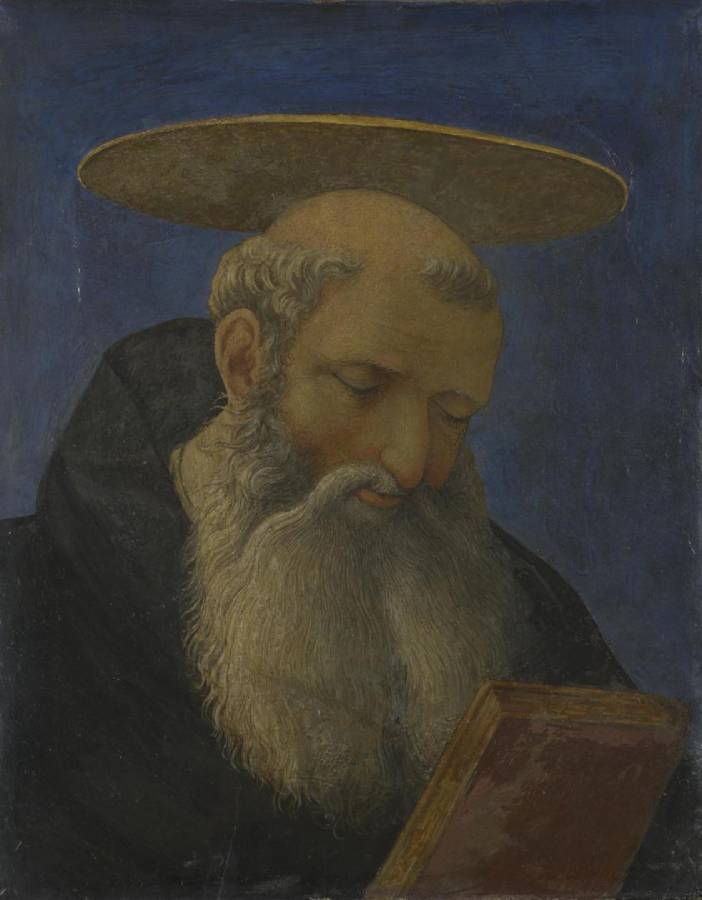Domenico Veneziano (c.1410-1461)
Testa di santo con tonsura e barba (Head of a Tonsured, Bearded Saint)
c.1440–1444
Fresco, transferred to tile, 45 x 35.5 cm
National Gallery, London
This is a fragment of a fresco of an image of a standing saint. It once formed part of a so-called ’street tabernacle‘ -– an outdoor religious painting – on a house in the Canto de’ Carnesecchi in central Florence. We hold two other fragments from the tabernacle including the head of another saint and a Virgin and Child enthroned. The saints framed the central image of the Virgin and Child.
We can’t identify the saint from his head alone. But his tonsured hairstyle – where the central section is shaved – was a sign of devotion among members of religious orders. His dark robe suggests that he was either an Augustinian (a follower of Saint Augustine) or a Benedictine (a follower of Saint Benedict) but without any more evidence it’s difficult to tell. His eyes are downcast as he looks at the red-covered book that he holds.
The golden disc of the saint’s halo sits lightly on top of, rather than behind, his head. This foreshortening was first tried by the Florentine painter Masaccio in his Santa Maria del Carmine altarpiece. By giving the sense of space around the figure’s head, it creates an impression of three-dimensionality. The halo is made of metal foil.
When the fresco was removed from the wall, the background was left there. The blue background we now see is a later addition, from the nineteenth century. The saint’s face was repainted although its overall shape was not altered. (NG)
These three fragments painted in fresco (painting directly onto wet plaster) come from the outside of a house in Florence. They were removed in the mid-nineteenth century. They were part of a street tabernacle, a large outdoor altarpiece, painted high on a wall. It included a pair of full-length standing saints – only the heads remain – that would have surrounded the central image of the Virgin and Child enthroned.
This painting was on a house built by a member of the Carnesecchi family, who owned several properties in the area; the street was called the Canto de’ Carnesecchi. This was a very visible spot on the route of religious processions in the city. (NG)
Carnesecchi Tabernacle:
 Domenico Veneziano (c.1410-1461)
Domenico Veneziano (c.1410-1461)
La Vergine e il Bambino in trono
c.1440–1444
National Gallery, London
 Domenico Veneziano (c.1410-1461)
Domenico Veneziano (c.1410-1461)
Testa di santo con tonsura senza barba
c.1440–1444
National Gallery, London

